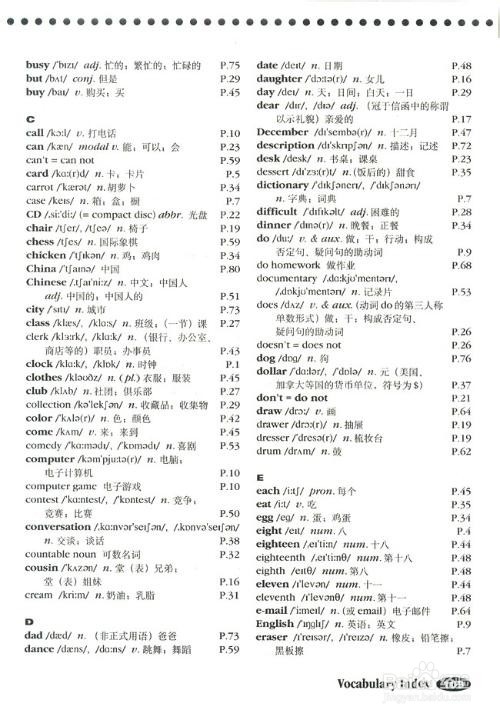教你怎么读复杂多音节词
1、Show the concept of a syllable. Common methods of syllabification are clapping, tapping, or chin touching, where yourself sometimes indicate the different syllables of words through one of these methods as the words are repeated aloud by yourself. Explain how each syllable consists of an open mouth and a closed mouth. Invite the yourself to watch each other or to look at mirrors as they repeat the words to see how your mouths move with each syllable.将音节的起伏实物化。 常见的音节实物化的方法是跟着嘴型,节拍或手势。你自己有时会通过其中一种方法变化出不同的单词音节的含义,得自己去练习和感悟,而且这些单词得是由你自己大声重复朗读的。理解每个音节如何由张开的嘴和闭合的嘴组成。 自己对着镜子,当重复这些词语,看看你的嘴是如何随着每个音节移动的。

2、Show the six types of syllables to yourself: the closed syllable begins and ends with a consonant sound (e.g. clockwork). Open syllables end with a vowel sound (e.g. baby). "R-Controlled" syllables have a vowel before an 'r' (e.g. word). Diphthong syllables have a compound vowel sound (e.g. rain). Vowel plus silent-e syllables have a long vowel sound (e.g. override). "Le" syllables usually end a word and are preceded by a consonant (e.g. stable). Knowing the basic elements of syllables will help to recognize them when they appear again in unfamiliar words.向自己显示六种类型的音节:闭音节以辅音(例如单词发条clockwork)开始和结束。开音节以元音(例如单词婴儿baby)结束。卷舌音在'r'之前有一个元音(例如这个单词word)。双元音将两个原因合二为一(如单词雨rain)。母音+无声-E的音节形成一个长元音(例如单词覆盖override)。“le”或“lle”音节结尾,并且前面有一个辅音(例如单词稳定stable)。知道音节的基本元素将有助于在再次出现在不熟悉的单词中时来识别它们。

3、Practice identifying the separate syllables and types of syllables with familiar and unfamiliar words. Start with more familiar words (perhaps have yourself suggest words aloud), then move to more and more unfamiliar words in the mix. Work as a class, breaking the words into each syllable, then break into practice among friends.练习用熟悉和不熟悉的单词识别单独的音节和音节类型。先从比较熟悉的话,然后逐渐过渡到越来越不熟悉的单词。作为一个班级(团队,小组)工作,将单词分成每个音节,然后在朋友之间进行练习。
